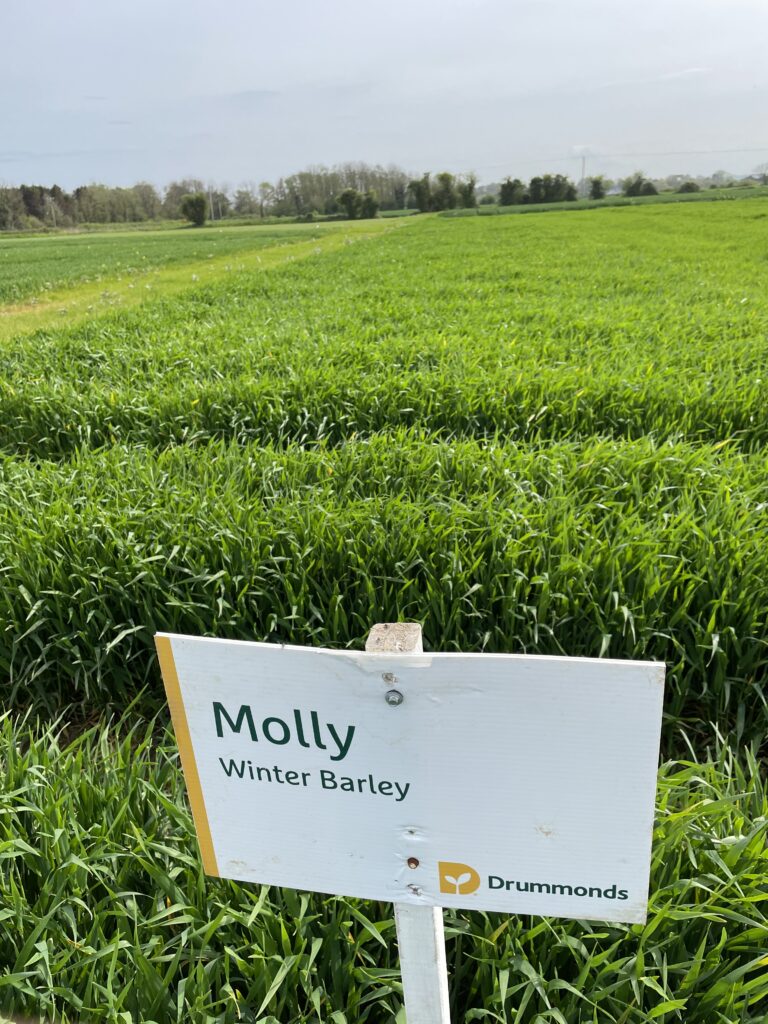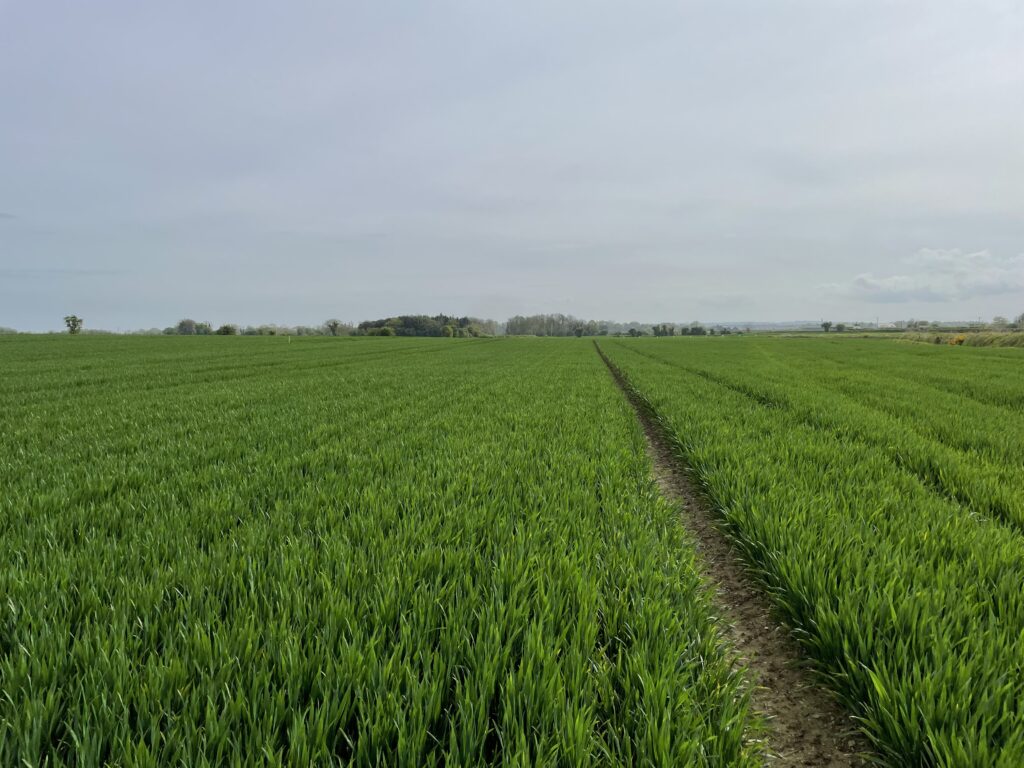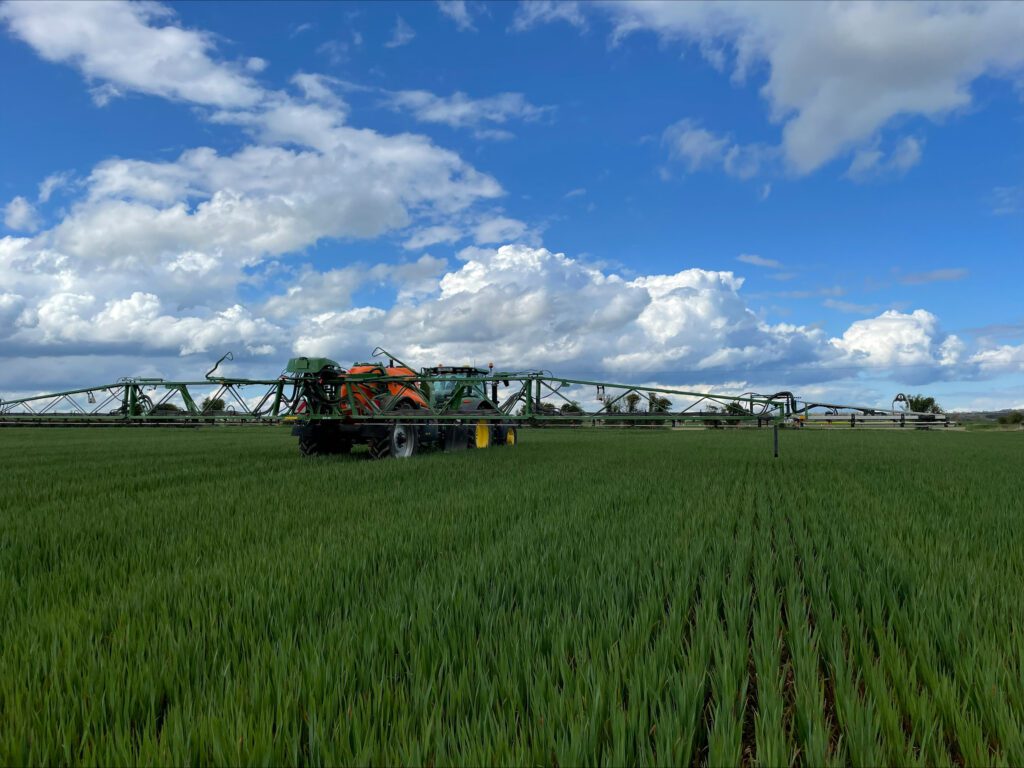Winter Barley
Winter barley crops across north-east of Ireland are progressing well, following rain after a dry March. Dry spells have allowed for timely field operations, including nitrogen applications, growth regulator treatments and T1 applications. Crops are now at key growth stages, with many crops with the flag leaf out approaching awns emergence.
The current weather, featuring light rain and growing temperatures is leading to steady crop development. However, growers should remain aware of disease pressures, particularly as humidity levels rise. As we approach T2 on barley it is crucial to monitor for signs of diseases like ramularia, rhynchosporium and net blotch.

T2 treatments in many crops will consist of a mix of Succinate Dehydrogenase Inhibitors (SDHi) and Qo Inhibitor Fungicides (Qol). If crops have missed a Plant Growth Regulator (PGR) treatment and is needing a growth regulator options during T1 this will include Terpal. Although Terpal cannot be used if straw is destined for mushroom compost.
Looking ahead, the forecast suggests continued mild conditions, which should support grain fill and overall crop health. Farmers are encouraged to maintain regular field inspections to assess crop progress and address any emerging issues promptly.
Wheat
Winter wheat crops in north-east Ireland are progressing well, with many fields having received their T0 fungicide applications mid April. The T1 application is now being applied and growers should aim to apply it as leaf three is fully emerged. This timing is crucial for effective septoria control, as protecting leaf three helps build a safe bridge for the upper canopy.
Although many canopy’s following T0 are clean a strong T1 should still be considered. A good T1 will have an SDHI, Triazole, multisite and phylgreen. A mildewcide is to be included if mildew is a problem.
Looking ahead over the next few days, the T2 application should be planned for approximately 15–20 days after T1, targeting the flag leaf stage. This is the most critical fungicide timing for yield protection. Products containing fenpicoxamid or fluopyram have shown excellent efficacy against Septoria and are worth considering, especially in high disease pressure situations.

Weather conditions are currently favourable, with mild temperatures and light rain supporting steady crop development. However, these conditions can also promote disease, so regular field monitoring is essential. Ensure that all fungicide applications are made at the correct timings to ensure the best results against disease. Consult with your local Drummonds Agronomist for advice and guidance.

Oats
Winter oats across the north-east of Ireland are advancing steadily thanks to a mix of mild temperatures and consistent soil moisture over recent weeks. Most crops have already received their T0 and T1 fungicide applications, which have played a crucial role in keeping early season diseases such as mildew and crown rust at bay.
At this stage, the crop is moving through key growth stages with strong tillering and canopy development visible in many fields. The next adequate application will be the T2 application, expected to take place within the next 30 days, ideally around booting. T2 is the most important fungicide timing in oats, as it protects the upper canopy and ensures maximum grain fill and yield potential.
Disease pressure should continue to be closely monitored, especially for Crown Rust, which tends to appear quickly in warm, humid conditions. Where symptoms are already present or where there’s a history of rust, growers should consider a T2 mix that includes triazoles combined with strobilurins or SDHIs, depending on the disease risk and previous applications.
Nutrient management also remains important. Keep an eye on trace elements such as manganese and potassium, as deficiencies can still emerge and compromise crop health.
With strong forward potential and the weather cooperating so far, attention to detail at T2 will help ensure that winter oats in the region deliver both in terms of quality and yield this season.
Spring Barley
Spring barley crops sown in late March across the north-east of Ireland are now emerging. Although some crops in moist seed beds got going, others in dry conditions came up uneven but will level off with recent rainfall. Most fields are currently at the early tillering stage (GS 12–21).
As the crop develops, timely herbicide applications are a priority over the next 7–10 days to manage early weed competition, particularly chickweed, fumitory, and volunteer cereals. A popular herbicide option at this stage includes fluroxypyr-based products or Sulfonylurea (SU) which offer broad-spectrum control. Always tailor herbicide choice to field weed pressure and be mindful of crop safety and growth stage.
Alongside herbicide treatment, growers should begin planning the T1 fungicide strategy. The first fungicide spray typically coincides with the mid-tillering to early stem extension stage likely due in 2–3 weeks. Given the growing season to date, Barley Yellow Dwarf Virus (BYDV) and net blotch are concerns to watch for. A mix of prothioconazole with a strobilurin or SDHI provides excellent early disease control, especially in high-risk or continuous barley sites.
Monitoring for nutrient deficiencies, particularly Manganese and Zinc, is also important at this stage, especially on lighter soils.

With good crop emergence and favourable early conditions, the focus now is on maintaining crop health and competitiveness. Attention to early spray timings will be crucial in setting up strong yield potential for the months ahead.
For further advise on all crop management follow up with your local Drummonds Agronomist



